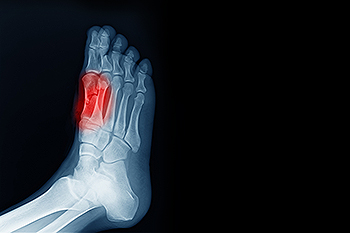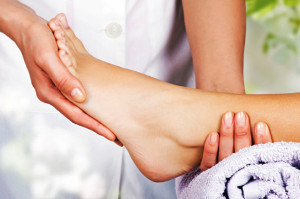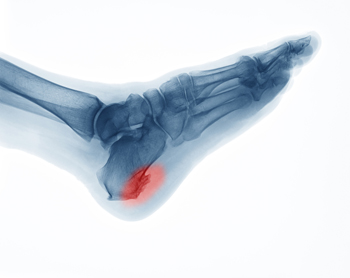
Participating in athletic activities account for approximately 50% of broken or dislocated ankles. The remaining half of the population can break their ankle from pursuing daily activities which can include shopping, walking, and traveling. It can range from a hairline crack to a full blown fracture, and this can cause severe pain and discomfort. The ankle has three sections, consisting of the tibia, the fibula, and the talus bones. There are a total of 26 bones in each foot, and are surrounded by numerous tendons, ligaments, and muscles. In a severe fracture, one or more of the bones break, and may also affect the adjoining ligaments. Ankle function is often affected when any of these bones are broken. There are three types of ankle fractures that can occur. The bump on the inside of the ankle is called medial malleolus, and can become fractured from direct trauma. This often indicates a long recovery time. The bump on the outside of the ankle is created by the fibula, and may be injured as a result of a stress fracture. A bimalleolar fracture happens when both sides of the ankle become broken, and this can occur from a traumatic event such as a car accident. If you have broken your ankle, it is strongly advised that you consult with a podiatrist who can determine what the best course of treatment is for you.
Broken ankles need immediate treatment. If you are seeking treatment, contact one of our podiatrists from Foot and Ankle Clinics, PA. Our doctors can provide the care you need to keep you pain-free and on your feet.
Broken Ankles
A broken ankle is experienced when a person fractures their tibia or fibula in the lower leg and ankle area. Both of these bones are attached at the bottom of the leg and combine to form what we know to be our ankle.
When a physician is referring to a break of the ankle, he or she is usually referring to a break in the area where the tibia and fibula are joined to create our ankle joint. Ankles are more prone to fractures because the ankle is an area that suffers a lot of pressure and stress. There are some obvious signs when a person experiences a fractured ankle, and the following symptoms may be present.
Symptoms of a Fractured Ankle
- Excessive pain when the area is touched or when any pressure is placed on the ankle
- Swelling around the area
- Bruising of the area
- Area appears to be deformed
If you suspect an ankle fracture, it is recommended to seek treatment as soon as possible. The sooner you have your podiatrist diagnose the fracture, the quicker you’ll be on the way towards recovery.
If you have any questions, please feel free to contact our offices located in Woodbury, West St. Paul, and Edina, MN . We offer the newest diagnostic and treatment technologies for all your foot care needs.





